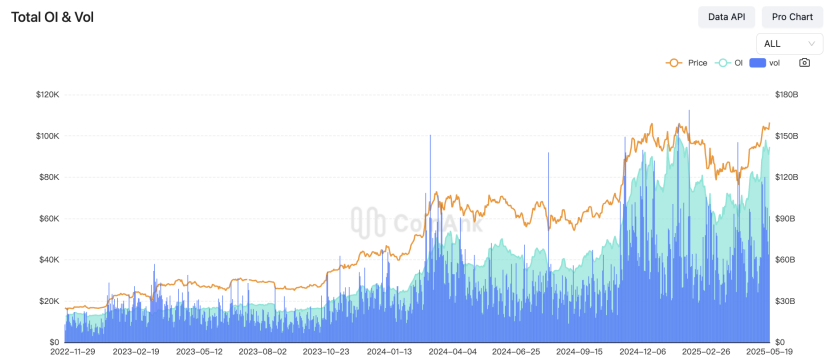Macroeconomic Interpretation: The U.S. Senate passed the "GENIUS Act" with a bipartisan vote of 66 to 32 in a procedural vote yesterday. It will now enter the debate and amendment phase in the Senate, and this event may become a watershed moment for the development of the cryptocurrency market. The bill establishes a federal regulatory framework for stablecoins for the first time, and market analysts place its importance above the approval of Bitcoin spot ETFs, viewing it as a sign of the "marriage between Wall Street and the cryptocurrency industry." Notably, the support of 16 Democratic lawmakers crossing party lines reflects a reassessment of the strategic value of crypto assets in U.S. politics. The establishment of a regulatory framework not only clears obstacles for institutional capital entry but may also trigger a valuation reconstruction of mainstream public chains like Ethereum and Solana, as well as DeFi protocols like Uniswap and Aave—compared to Bitcoin as a "digital gold" asset, regulatory clarity has a more catalytic effect on the value release of application-layer projects.
The market structure is undergoing a profound transformation. Monitoring data shows that Bitcoin's open interest has reached a historical peak of $72 billion, but the perpetual contract funding rate remains close to zero, indicating that this round of price increase is primarily driven by spot buying. This "low leverage" characteristic sharply contrasts with the cycle of 2021, suggesting a healthier market foundation. On-chain data supports this shift: statistics show that currently, 99% of Bitcoin holders are in profit, but the UTXO profit and loss ratio's 30-day moving average has surpassed the 200 threshold, indicating that the market has consumed most of the "easy upward" momentum. Future breakthroughs will require stronger capital inflows or significant fundamental stimuli; relying solely on existing capital for speculation is unlikely to sustain a steep upward curve.
Institutional behavior has become a key variable affecting short-term trends. Bitcoin faced resistance when approaching the $110,000 mark, with continued buying from listed companies like Strategy and Metaplanet forming the core support for current prices. Japanese company Metaplanet, as a bellwether for the Asian market, has seen its stock price rise by 158% this month, resonating with its continued accumulation of Bitcoin. It is worth noting that such institutions may play the role of "marginal buyers"—when their balance sheet allocations approach saturation, the market may face a liquidity vacuum. The merger case of Nasdaq-listed Kindly MD and Bitcoin-native company Nakamoto Holdings reveals an innovative path for traditional industries to enter the cryptocurrency space through capital operations; this "de facto ETF" model may give rise to more cross-market arbitrage opportunities.
The macroeconomic landscape presents a complex game of strategies. The statement by Federal Reserve official Daly that "policy is in a good place" has temporarily eased market concerns about aggressive interest rate hikes, but the risks of stagflation in the U.S. economy and geopolitical conflicts continue to drive up demand for safe-haven assets. The stalled tax cut bill pushed by Trump has exposed the uncertainty of U.S. fiscal policy, and this macro volatility objectively strengthens Bitcoin's narrative as a safe haven. From the perspective of capital flows, even as the 10-year U.S. Treasury yield climbs to a high of 4.5%, Bitcoin has maintained price resilience, confirming its gradual detachment from the risk asset camp and evolution into an independent asset class.
Looking ahead, the institutional dividends brought by regulatory breakthroughs and the demand for institutional allocation form a long-term positive outlook, but the short-term overbought pressure indicated by technical indicators cannot be ignored. For ordinary investors, two dimensions should be closely monitored: first, the specific provisions of the final version of the "GENIUS Act" regarding stablecoin issuance reserves, cross-chain transactions, and other clauses, as these details will determine the compliance space of the DeFi ecosystem; second, the changes in Bitcoin holdings disclosed in the financial reports of listed companies, as micro-level institutional operational strategies may amplify price fluctuations. Historical experience shows that when the market completes the transition from speculation-driven to value storage functions, it is often accompanied by violent fluctuations and cognitive reconstruction—whether Bitcoin can break the cycle curse may depend on its demonstrated antifragility in this game.

BTC Data Analysis:
According to CoinAnk data, on May 21, 2025, the scale of Bitcoin contract holdings surged to a historic high of $72 billion, but the perpetual contract funding rate remains close to neutral, indicating a balance in the long-short game. Currently, nearly 99% of Bitcoin addresses are in profit, but the UTXO profit and loss ratio's 30-day moving average has surpassed the critical value of 200, suggesting that the market has digested the momentum from the previous rapid rise and has entered a phase of momentum transition.
From a market structure perspective, the surge in futures open interest is often associated with amplified price volatility, and historical data shows that when this indicator breaks previous highs, it is often accompanied by large-scale liquidation risks. Although institutional participation continues to rise (with CME accounting for over 30%), and the inflow of spot ETF funds supports market confidence, the perpetual contract funding rate has not strengthened in tandem, indicating a cooling of leveraged speculation. It is noteworthy that the UTXO profit and loss ratio breaking the threshold is similar to warning signals in the 2024 bull market cycle, reflecting that the accumulation of short-term profit-taking may trigger selling pressure. Overall, the market may enter a phase of consolidation and fluctuation, requiring caution against severe bidirectional volatility under high open interest, but in the medium to long term, institutional capital inflows and the supply-demand relationship of the halving cycle still provide fundamental support for Bitcoin.
免责声明:本文章仅代表作者个人观点,不代表本平台的立场和观点。本文章仅供信息分享,不构成对任何人的任何投资建议。用户与作者之间的任何争议,与本平台无关。如网页中刊载的文章或图片涉及侵权,请提供相关的权利证明和身份证明发送邮件到support@aicoin.com,本平台相关工作人员将会进行核查。



